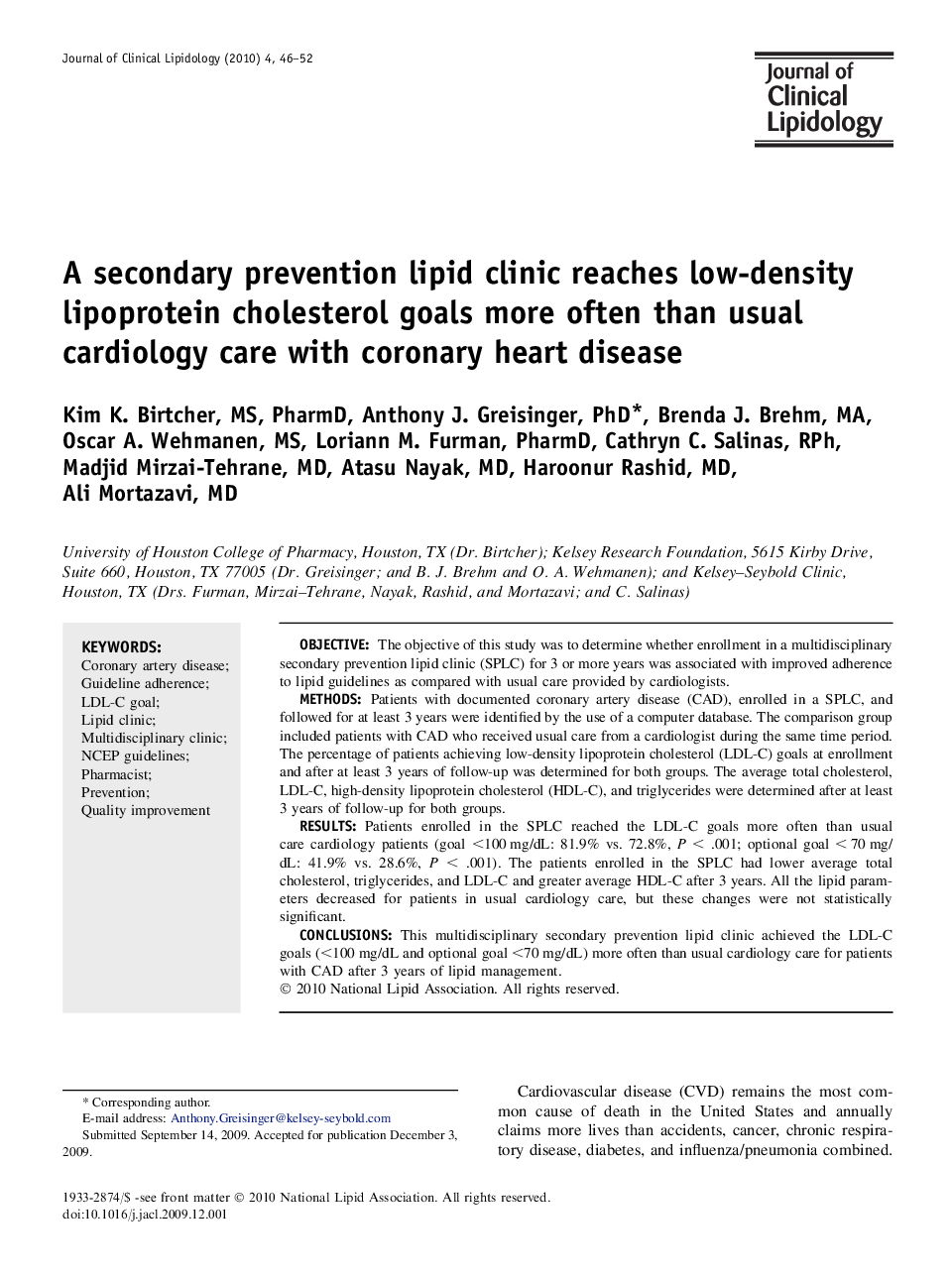| Article ID | Journal | Published Year | Pages | File Type |
|---|---|---|---|---|
| 2967147 | Journal of Clinical Lipidology | 2010 | 7 Pages |
ObjectiveThe objective of this study was to determine whether enrollment in a multidisciplinary secondary prevention lipid clinic (SPLC) for 3 or more years was associated with improved adherence to lipid guidelines as compared with usual care provided by cardiologists.MethodsPatients with documented coronary artery disease (CAD), enrolled in a SPLC, and followed for at least 3 years were identified by the use of a computer database. The comparison group included patients with CAD who received usual care from a cardiologist during the same time period. The percentage of patients achieving low-density lipoprotein cholesterol (LDL-C) goals at enrollment and after at least 3 years of follow-up was determined for both groups. The average total cholesterol, LDL-C, high-density lipoprotein cholesterol (HDL-C), and triglycerides were determined after at least 3 years of follow-up for both groups.ResultsPatients enrolled in the SPLC reached the LDL-C goals more often than usual care cardiology patients (goal <100 mg/dL: 81.9% vs. 72.8%, P < .001; optional goal < 70 mg/dL: 41.9% vs. 28.6%, P < .001). The patients enrolled in the SPLC had lower average total cholesterol, triglycerides, and LDL-C and greater average HDL-C after 3 years. All the lipid parameters decreased for patients in usual cardiology care, but these changes were not statistically significant.ConclusionsThis multidisciplinary secondary prevention lipid clinic achieved the LDL-C goals (<100 mg/dL and optional goal <70 mg/dL) more often than usual cardiology care for patients with CAD after 3 years of lipid management.
